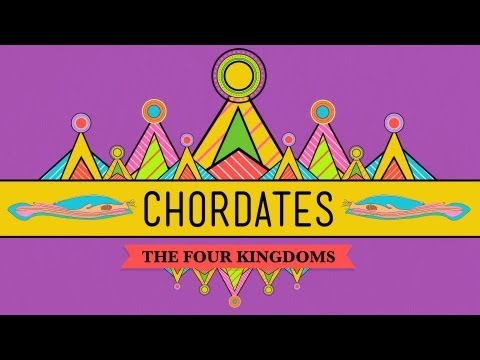15.27: Putting It Together- Vertebrates
- Page ID
- 44751
As we learned at the beginning of this lesson, vertebrates are perhaps the most recognizable animals on earth, from the endangered Siberian tiger to the domestic cat. Vertebrates are complex animals with unique features and needs.
Veterinarian
Veterinarians treat diseases, disorders, and injuries in animals, primarily vertebrates. They treat pets, livestock, and animals in zoos and laboratories. Veterinarians usually treat dogs and cats, but also treat birds, reptiles, rabbits, and other animals that are kept as pets. Veterinarians that work with farms and ranches treat pigs, goats, cows, sheep, and horses.
Veterinarians are required to complete a degree in veterinary medicine, which includes taking courses in animal physiology, anatomy, microbiology, and pathology, among many other courses. The physiology and biochemistry of different vertebrate species differ greatly.
Veterinarians are also trained to perform surgery on many different vertebrate species, which requires an understanding of the vastly different anatomies of various species. For example, the stomach of ruminants like cows has four compartments versus one compartment for non-ruminants. Birds also have unique anatomical adaptations that allow for flight.
Some veterinarians conduct research in academic settings, broadening our knowledge of animals and medical science. One area of research involves understanding the transmission of animal diseases to humans, called zoonotic diseases. For example, one area of great concern is the transmission of the avian flu virus to humans. One type of avian flu virus, H5N1, is a highly pathogenic strain that has been spreading in birds in Asia, Europe, Africa, and the Middle East. Although the virus does not cross over easily to humans, there have been cases of bird-to-human transmission. More research is needed to understand how this virus can cross the species barrier and how its spread can be prevented.
Perhaps more importantly, human beings are vertebrates! The more we can understand our own bodies, the better we can navigate through life. This video introduces us to ourselves by taking us on a journey through the fascinatingly diverse phyla known as chordata. And the next time someone asks you who you are, you can give them the facts: you’re a mammalian amniotic tetrapodal sarcopterygian osteichthyen gnathostomal vertebrate cranial chordate.
Contributors and Attributions
- Putting it Together: Vertebrates. Authored by: Shelli Carter and Lumen Learning. Provided by: Lumen Learning. License: CC BY: Attribution


